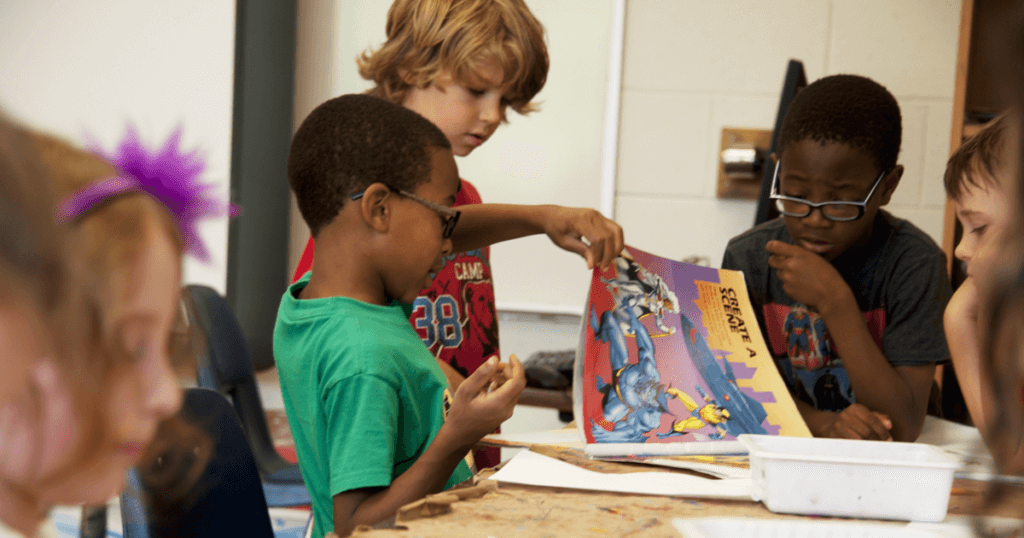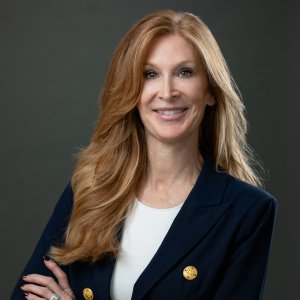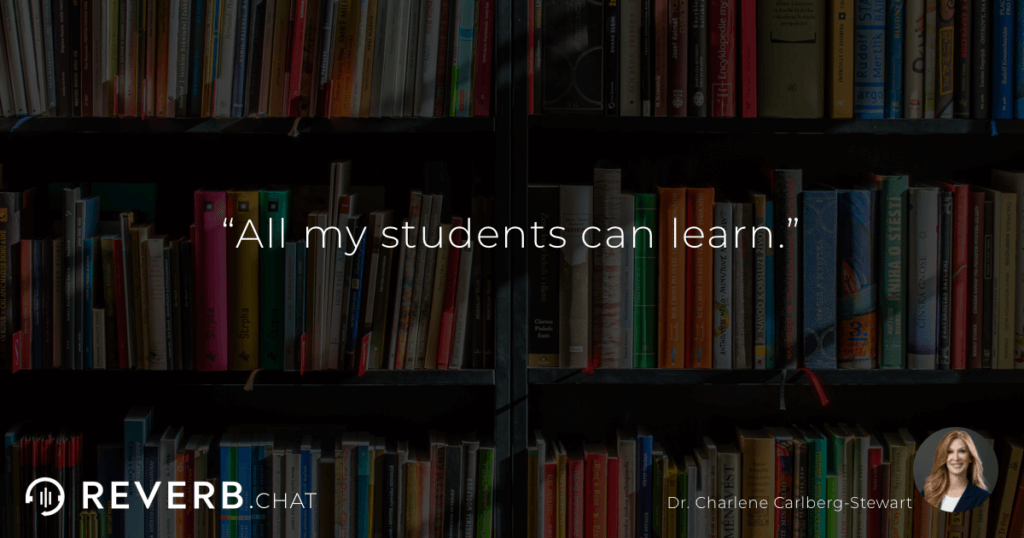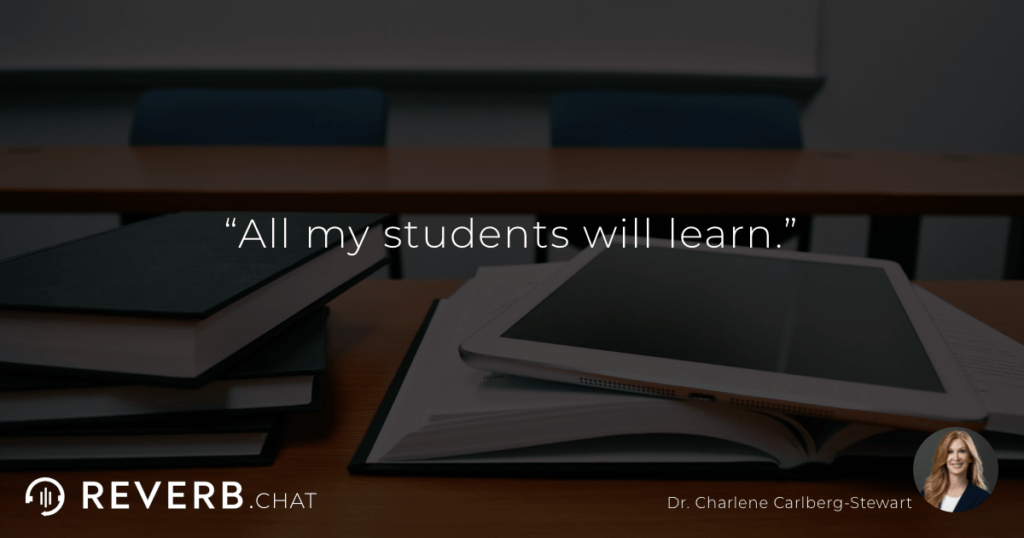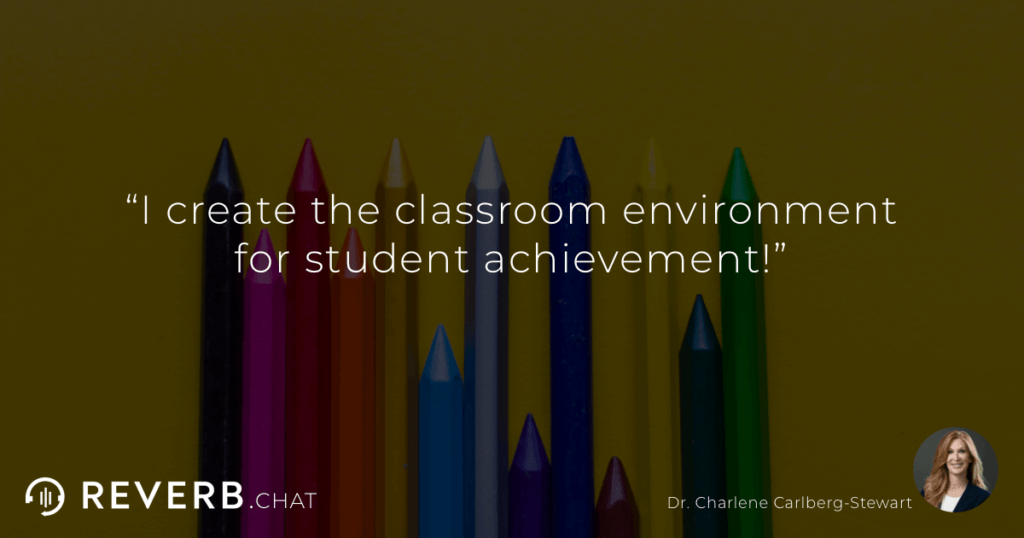What educators say and believe is the foundation that determines if students will do well academically, socially, and emotionally.
For 30 years, I have led every classroom, for both children and adults, living by three beliefs that built my classroom on a firm foundation of love, care, and trust. These three beliefs exemplify an attitude that ignites students to experience a teacher who loves and cares for them and is committed to their learning.
All three beliefs are needed if you truly want to transform your classroom to ensure all students reach their highest potential.
1. All my students can learn.
Belief number one, say it with me, “All my students can learn.” Repeat it! “All my students can learn.” Now say it one more time! “All my students can learn.”
Yes, all your students can learn.
It’s my job to find the window into their inspiration and cognition.
Vygotsky calls this the zone of proximal development or the sweet spot of instruction.
As the teacher, I must identify what students can do to determine where to instruct them next. This asset-based approach allows me to move into the practitioner’s seat. As an informed practitioner, I must formatively assess my student’s skills in the subject area.
Capturing baseline data on my students’ skills provides me with the knowledge of the skills the student has already acquired and the knowledge of the skills that I will need to teach next.
Once I identify the skills to be introduced next, I am ready to move into belief number two!
2. All my students will learn!
Let’s say belief number two together. “All my students WILL learn.” Now speak it a little louder, “All my students WILL learn.” Yes, repeat it, “All my students WILL learn!”
The pressure is real. The pressure is great! And it is my professional responsibility to ensure every student grows at least a full academic year!
If this doesn’t cause you a little anxiety, then you do not own the work required to be an effective teacher. Now, I must be committed to the challenge of capturing, inspiring, and motivating my students to learn!
Belief number one, all my students can learn, requires me to take an asset-based approach to instruction. Taking an asset-based stance requires me to identify the skills my students have acquired and the skills my students need to learn next. I must use these diagnostic results to prepare lessons that ensure all students will learn.
The lessons I design must captivate my students’ attention. I am always considering how my students will see the value of the lesson and why the lesson is essential.
I always want my students to be aware of the lesson’s importance to their personal and academic life. I need my students to own the learning because it MATTERS to their success in our world!
I captivate and inspire my students by making the information relevant to their life and meeting them at their point of need. I consider how the knowledge and skills need to be heard, seen, and felt based on my student’s interests, experiences, and backgrounds.
If all my students will learn, I must decide how to motivate them to learn throughout the lesson by celebrating their success. I must choose how to honor the small wins of content knowledge and skill acquisition throughout the lesson.
I will need to identify how my students will show what they learned and how they learned. This will build student ownership of learning.
When my students can articulate the skills they are learning and why it’s essential, I have successfully applied belief number two, “All my students will learn!” These first two beliefs lead me to direct ownership of my classroom environment.
3. I create the classroom environment for student achievement!
Belief number three, shout this one out with me, “I control the classroom environment!” Shout it out this time and say “l.” Say “I” again! One more time, say, “I,” Yes, “I control the classroom environment!”
Children will achieve and succeed only if I build a learning environment that is safe socially, emotionally, and academically. I must consider Maslow’s hierarchy of needs daily to support my students’ safety needs and move them up the ladder to self-actualization. This cannot be done alone or in isolation.
I will need to enlist the support of my school and community system of social workers, psychologists, resources staff, paraprofessionals, etc., to gain the additional support required to meet my students’ needs.
I must also create a classroom that is aesthetically and emotionally inviting. Students who enter my classroom are excited to learn and honor each other regardless of their background or current knowledge. My students feel valued and appreciated for their unique personality.
My students will know and embrace the understanding that whether they are right or wrong, they are safe and will be held to a high standard of accountability for their own learning and the learning of the classroom community. A classroom community built on the foundation that all my students can learn and all my students will learn.
Conclusion
As you apply these beliefs in your practice, you will transform your classroom.
This transformation will help all your students learn and grow as individuals and as a community of learners led by you! You, a well-informed practitioner who believes in the power of knowing that every student who enters your classroom knows they are students who will learn, who can learn, and who can trust that you will create a classroom culture built on learning for all!

